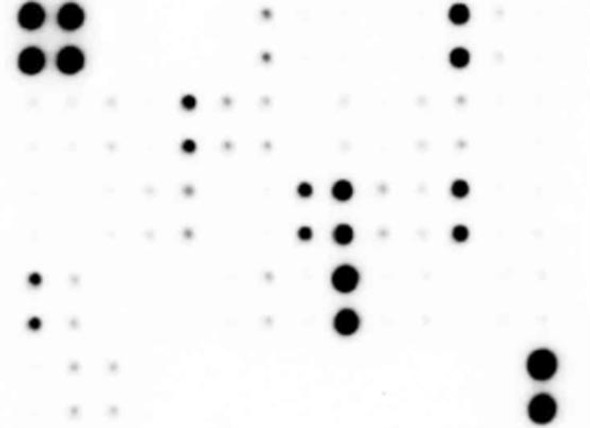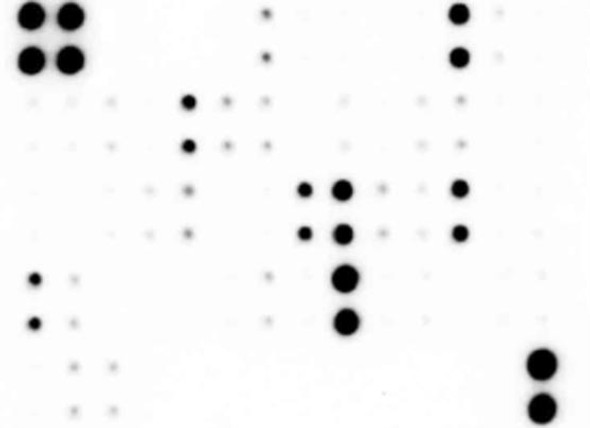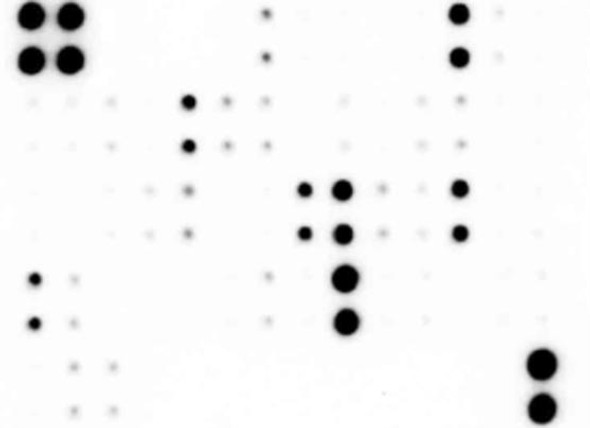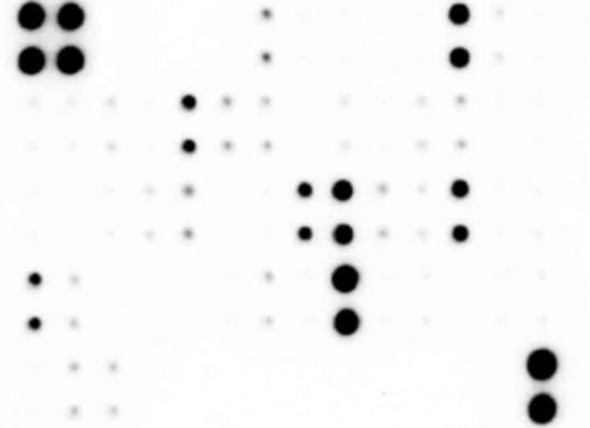Human Immune Checkpoint Array (23 targets) (SARB0047)
- SKU:
- SARB0047
- Product Type:
- Protein Array
- Analytes:
- 4-1BB (TNFRSF9/CD137)
- B7-H2 (ICOS Ligand)
- B7-H3 (CD276)
- B7-H4
- CD200
- CD200 R1
- CD27 (TNFRSF7)
- HVEM (TNFRSF14/CD270)
- CD27 Ligand (TNFSF7)
- CD28
- CD40 Ligand (TNFSF5)
- CD80 (B7-1)
- CD86 (B7-2)
- CTLA-4 (CD152)
- ICOS
- LAG-3
- OX40 (TNFRSF4)
- OX40 Ligand (TNFSF4)
- PD-1
- B7-H1 (CD274/PD-L1)
- PD-L2 (B7-DC)
- TIM-1 (KIM-1)
- TIM-3 (KIM-3)
- Reactivity:
- Human
- Applications:
- Multiplex Array
Description
Human Immune Checkpoint Array (23 targets) (SARB0047)
The Human Immune Checkpoint Array with 23 targets (SARB0047) offered by AssayGenie is a powerful tool for studying immune regulation and immune response modulation. This array allows for the simultaneous detection and analysis of 23 immune checkpoint proteins, including CD300A, in human samples. The CD300A protein, also known as the immune inhibitory receptor, is a key player in immune homeostasis and has been implicated in regulating inflammation and inhibiting allergic reactions.The array is highly sensitive and specific, making it an ideal choice for researchers studying immunology, cancer research, autoimmune disorders, and chronic inflammatory conditions.
By understanding the activity of CD300A and other immune checkpoint proteins, researchers can develop targeted therapies that modulate immune function for the treatment of various diseases.Overall, the Human Immune Checkpoint Array with 23 targets provided by AssayGenie is a valuable tool for advancing research in the field of immune regulation and immune response modulation.
| Product Sku: | SARB0047 |
| Size: | 2, 4, or 8 |
| Species Detected: | Human |
| Number of Targets Detected: | 23 |
| Gene Symbols: | CD200, CD200R1, CD27, CD274, CD276, CD28, CD40LG, CD70, CD80, CD86|CTLA4, HAVCR1, HAVCR2, ICOS, ICOSLG, LAG3, PDCD1, PDCD1LG2, TNFRSF14, TNFRSF4, TNFRSF9, TNFSF4, VTCN1 |
| Compatible Sample Types: | Cell Culture Supernatants, Cell Lysates, Plasma, Serum, Tissue Lysates |
| Design Principle: | Sandwich-based |
| Method of Detection: | Chemiluminescence |
| Pathway: | |
| Quantitative/Semi-Quantitative: | Semi-Quantitative |
| Solid Support: | Membrane |
| Suggested Application(s): | Multiplexed Protein Detection; Detection of Relative Protein Expression; Detecting Patterns of Cytokine Expression; Biomarker/ Key Factor Screening; Identifying Key Factors; Confirming a Biological Process |
| Storage/Stability: | For best results, store the entire kit frozen at -20°C upon arrival. Stored frozen, the kit will be stable for at least 6 months which is the duration of the product warranty period. Once thawed, store array membranes and 1X Blocking Buffer at -20°C and all other reagents undiluted at 4°C for no more than 3 months. |
| Hover over target for more information | ||||
|---|---|---|---|---|
4-1BB (TNFRSF9/CD137)
| B7-H2 (ICOS Ligand)
| B7-H3 (CD276)
| B7-H4
| CD200
|
CD200 R1
| CD27 (TNFRSF7)
| HVEM (TNFRSF14/CD270)
| CD27 Ligand (TNFSF7)
| CD28
|
CD40 Ligand (TNFSF5)
| CD80 (B7-1)
| CD86 (B7-2)
| CTLA-4 (CD152)
| ICOS
|
LAG-3
| OX40 (TNFRSF4)
| OX40 Ligand (TNFSF4)
| PD-1
| B7-H1 (CD274/PD-L1)
|
PD-L2 (B7-DC)
| TIM-1 (KIM-1)
| TIM-3 (KIM-3)
| ||
- Easy to use
- No specialized equipment needed
- Compatible with nearly any liquid sample
- Proven technology
- Highly sensitive (pg/ml)
- Sandwich ELISA specificity
- Higher density than ELISA, Western blot or bead-based multiplex
- Human Immune Checkpoint Antibody Array C1 Membranes
- Blocking Buffer
- Wash Buffer 1
- Wash Buffer 2
- Biotinylated Detection Antibody Cocktail
- Streptavidin-Conjugated HRP
- Detection Buffer C
- Detection Buffer D
- Lysis Buffer
- 8-Well Incubation Tray
- Plastic Sheets
- Array Templates
Other Materials Required
- Pipettors, pipet tips and other common lab consumables
- Orbital shaker or oscillating rocker
- Tissue Paper, blotting paper or chromatography paper
- Adhesive tape or Saran Wrap
- Distilled or de-ionized water
- A chemiluminescent blot documentation system , X-ray Film and a suitable film processor, or another chemiluminescent detection system.
| 1. | Block membranes |
| 2. | Incubate with Sample |
| 3. | Incubate with Biotinylated Detection Antibody Cocktail |
| 4. | Incubate with HRP-Conjugated Streptavidin |
| 5. | Incubate with Detection Buffers |
| 6. | Image with chemiluminescent imaging system |
| 7. | Perform densitometry and analysis |










